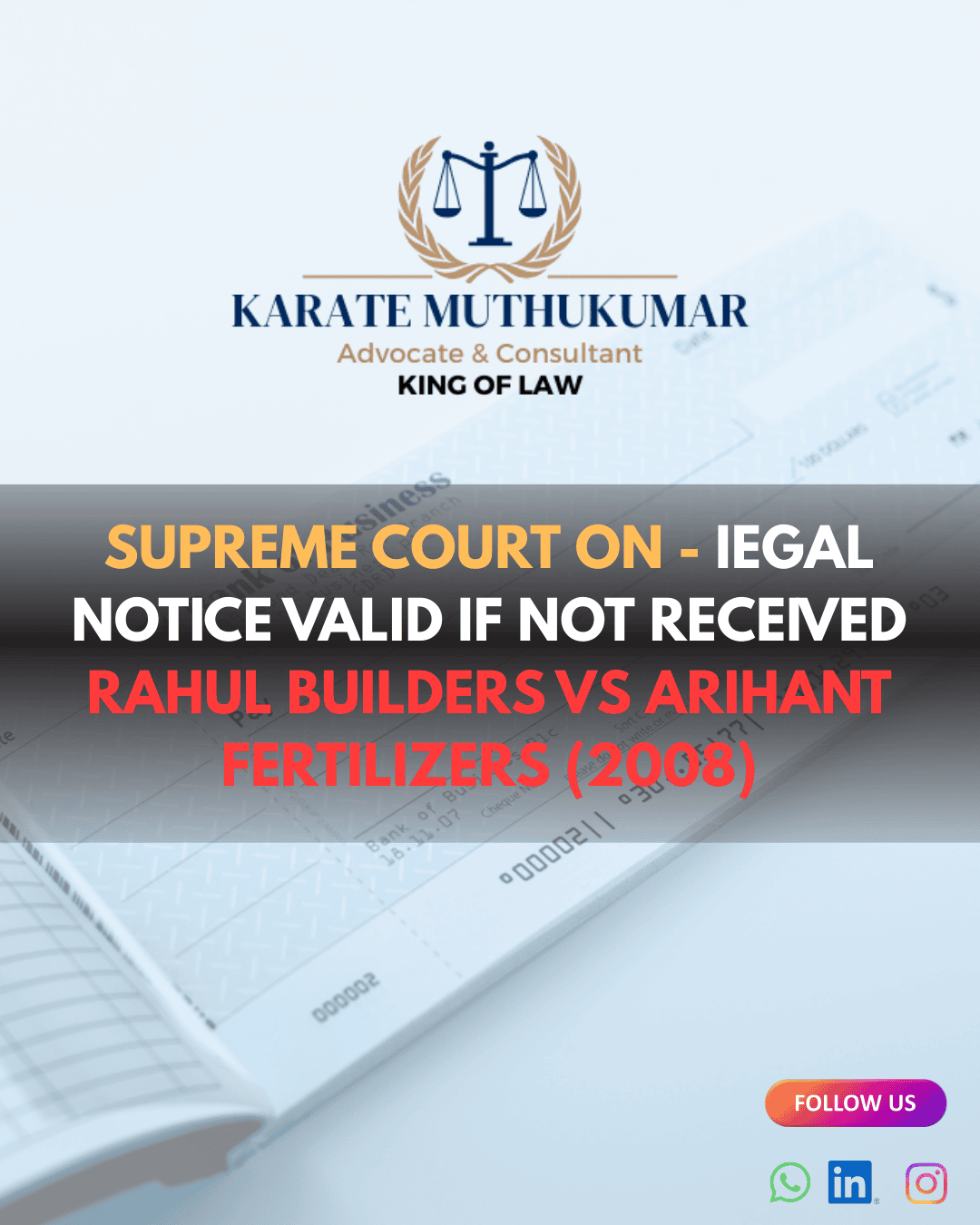The Negotiable Instruments Act, 1881 governs cheque transactions in India. Section 138 of this Act deals with dishonour of cheques due to insufficient funds or other reasons. One key requirement under Section 138 is that the complainant (the person who received the bounced cheque) must send a legal notice to the drawer (the person who issued the cheque) within 30 days of getting intimation from the bank
But here comes a common question:
👉 What if the accused refuses to accept the notice or later says that he never received it?
The Supreme Court answered this in the landmark case of Rahul Builders vs Arihant Fertilizers & Chemicals & Anr. (2008) 2 SCC 321.

Facts of the Case
Rahul Builders issued a cheque in favour of Arihant Fertilizers.
The cheque was dishonoured by the bank due to insufficient funds.
Arihant Fertilizers sent a statutory legal notice to Rahul Builders within the prescribed 30 days.
Rahul Builders argued that since the notice was not “properly served” or “actually received,” the complaint under Section 138 was not valid.
Legal Issue Before the Court
Does the complainant need to prove that the accused actually received the legal notice, or is it enough to show that the notice was sent to the correct address?
Supreme Court’s Decision
The Court ruled strongly in favour of the complainant:
Sending is Sufficient
The law only requires the complainant to show that the notice was sent to the correct address within the time limit.
It is not mandatory to prove that the accused physically received the notice.
Presumption of Service
Under Section 27 of the General Clauses Act, 1897 and Section 114 of the Evidence Act, 1872, when a notice is sent by registered post to the correct address, there is a legal presumption that it has been delivered.
Accused Cannot Escape by Avoiding Notice
If the accused deliberately avoids the notice or refuses to accept it, they cannot later claim “I never got the notice” as a defence.
Key Takeaways from the Case
For Complainants (Payees):
Always send the notice to the correct address of the drawer.
Send it through registered post or reliable courier.
Keep proof of dispatch.
For Drawer (Person Who Issued Cheque):
You cannot avoid liability by refusing or dodging notices.
The law assumes that once the notice is properly sent, you have been informed.
Why This Case is Important
Before this ruling, many accused persons used to escape cheque bounce cases by claiming they never got the legal notice.
The Supreme Court’s judgment closed this loophole and made it clear:
👉 The responsibility of the complainant ends once the notice is properly sent. The rest is on the drawer.
Conclusion
The judgment in Rahul Builders vs Arihant Fertilizers (2008) is a big relief for complainants in cheque bounce cases. It ensures that people cannot misuse technicalities like “non-receipt of notice” to avoid liability.
In simple words:
✔️ If you issue a cheque, you cannot escape by avoiding a legal notice.
✔️ If you send a notice, sending it correctly is enough – the law is on your side.

